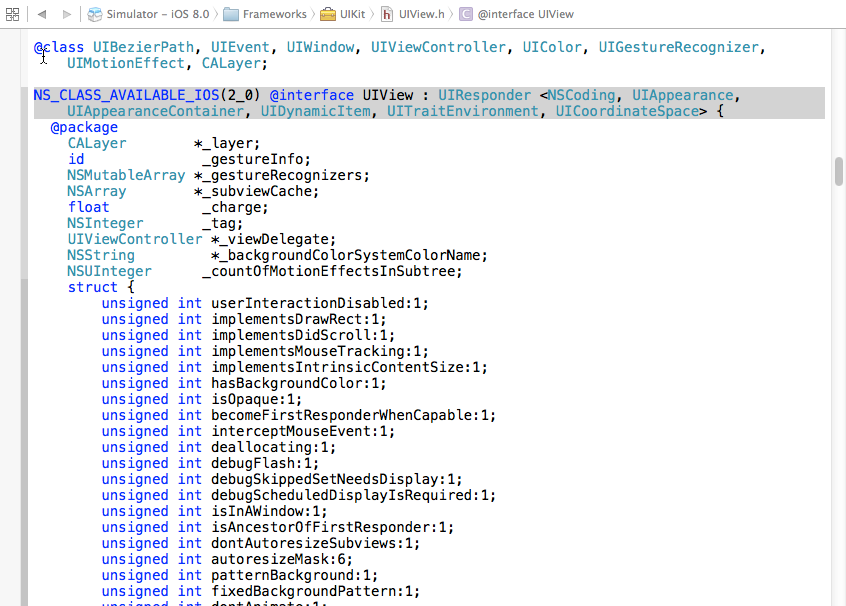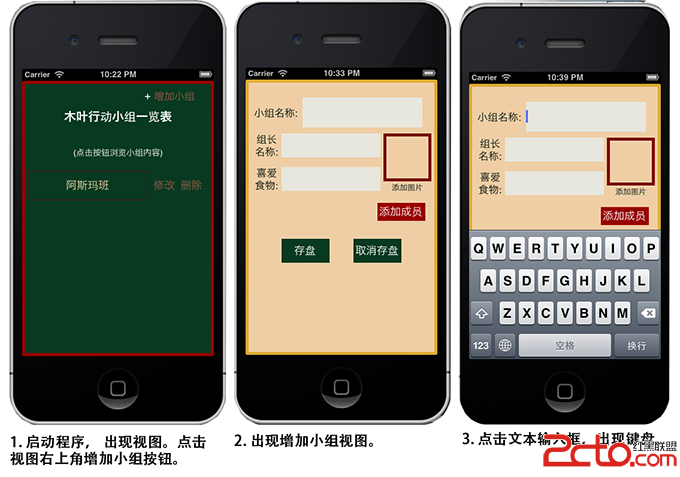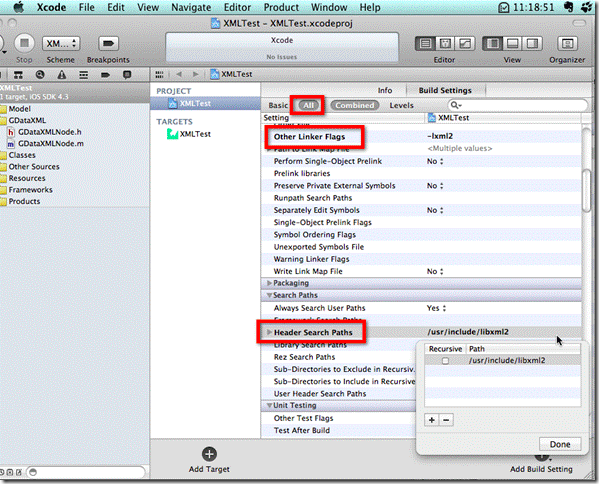Xcode進步開辟效力的代碼塊分享
媒介
我們在開辟的時刻會用到許多經常使用的代碼,好比UITableView的署理,普通情形下我們要末本身敲要末復制粘貼,然則Xcode有一個功效,可以用一行代碼敲出你預設的一段代碼。這就是Xcode的代碼塊功效,這篇文章跟年夜家分享一些經常使用的和自界說的代碼塊,有須要的上面來一路看看吧。
1、經常使用的:
1.strong:
@property (nonatomic,strong) <#Class#> *<#object#>;
2.weak:
@property (nonatomic,weak) <#Class#> *<#object#>;
3.copy:
@property (nonatomic,copy) NSString *<#string#>;
4.assign:
@property (nonatomic,assign) <#Class#> <#property#>;
5.delegate:
@property (nonatomic,weak) id<<#protocol#>> <#delegate#>;
6.block:
@property (nonatomic,copy) <#Block#> <#block#>;
7.mark:
#pragma mark <#mark#>
8.ReUseCell:
static NSString *rid=<#rid#>;
<#Class#> *cell=[tableView dequeueReusableCellWithIdentifier:rid];
if(cell==nil){
cell=[[<#Class#> alloc] initWithStyle:UITableViewCellStyleDefault reuseIdentifier:rid];
}
return cell;
9.MainGCD:
dispatch_async(dispatch_get_main_queue(), ^{
<#code#>
});
10.AfterGCD:
dispatch_after(dispatch_time(DISPATCH_TIME_NOW, (int64_t)(<#delayInSeconds#> * NSEC_PER_SEC)), dispatch_get_main_queue(), ^{
<#code to be executed after a specified delay#>
});
11.OnceGCD:
static dispatch_once_t onceToken;
dispatch_once(&onceToken, ^{
<#code to be executed once#>
});
2、自界說代碼片斷:
以Strong為例:
1.在書寫@property屬性的處所寫下以下語句:
@property (nonatomic,strong) <#Class#> *<#object#>;
2.選中上述語句,用鼠標左鍵拖到 下圖中指導的代碼片斷在Xcode中的區域裡,就新建了一個代碼片斷
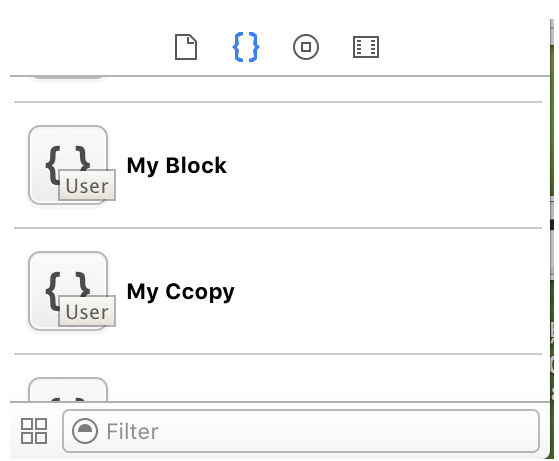
3.松開鼠標左鍵的同時,會彈出代碼片斷編纂窗口,以下圖所示:
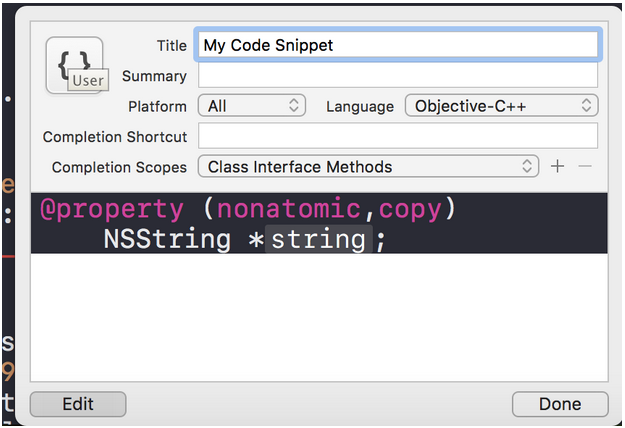
圖中從上到下的寄義順次是:
①Title
代碼片斷的題目
②Summary
代碼片斷的描寫文字
③Platform
可使用代碼片斷的平台,有IOS/OS X/All三個選項
④Language
可以在哪些說話中應用該代碼片斷
⑤Completion Shortcut
代碼片斷的快捷方法,例:copy
⑥Completion Scopes
可以在哪些文件中應用以後代碼片斷,好比全體地位,頭文件中等,固然可以添加多個支撐的地位。
最初的一個年夜無暇白區域是對代碼片斷的後果預覽。
一切設置完成今後,點擊該菜單右下角的Done按鈕,新建任務就停止了。
代碼片斷備份:
Xcode中的代碼片斷默許放鄙人面的目次中:
~/Library/Developer/Xcode/UserData/CodeSnippets
我們可以將目次中的代碼片斷備份,也能夠將其直接拷出來放在分歧的電腦上應用。
總結
以上就是這篇文章的全體內容了,願望能對年夜家的進修或許任務帶來必定的贊助,假如有疑問年夜家可以留言交換。
【Xcode進步開辟效力的代碼塊分享】的相關資料介紹到這裡,希望對您有所幫助! 提示:不會對讀者因本文所帶來的任何損失負責。如果您支持就請把本站添加至收藏夾哦!
- iOS9與XCode7中不克不及應用http銜接的疾速處理方法
- xcode8 封閉掌握台不打印不信息的處理辦法(圖文詳解)
- 史上最具體的CocoaPods裝置教程(圖文)
- IOS Xcode中快捷鍵年夜全
- iOS中處理Xcode 8掌握台亂碼的方法
- IOS開辟之適配iOS10及Xcode8的留意點
- xcode8提交ipa掉敗沒法構建版本成績的處理計劃
- XCode 加速編譯鏈接速度的辦法
- 2016 cocoapods的裝置和應用辦法和版本進級碰到的成績
- IOS 陀螺儀開辟(CoreMotion框架)實例詳解
- 進修iOS自界說導航掌握器UINavigationController
- Xcode 8打印log日記的成績小結及處理辦法
- iOS10 適配和Xcode8設置裝備擺設總結
- iOS Xcode8更新後輸入log日記封閉的辦法
- Xcode8、iOS10進級成績記載

